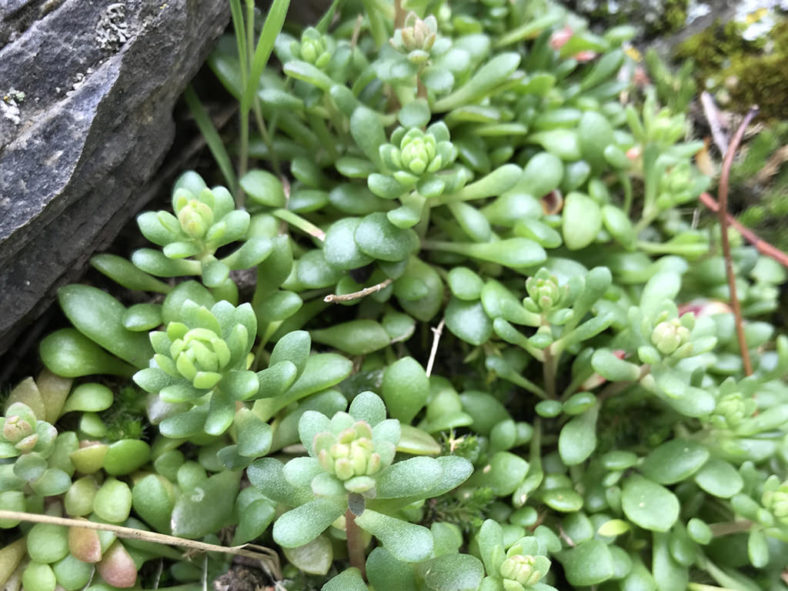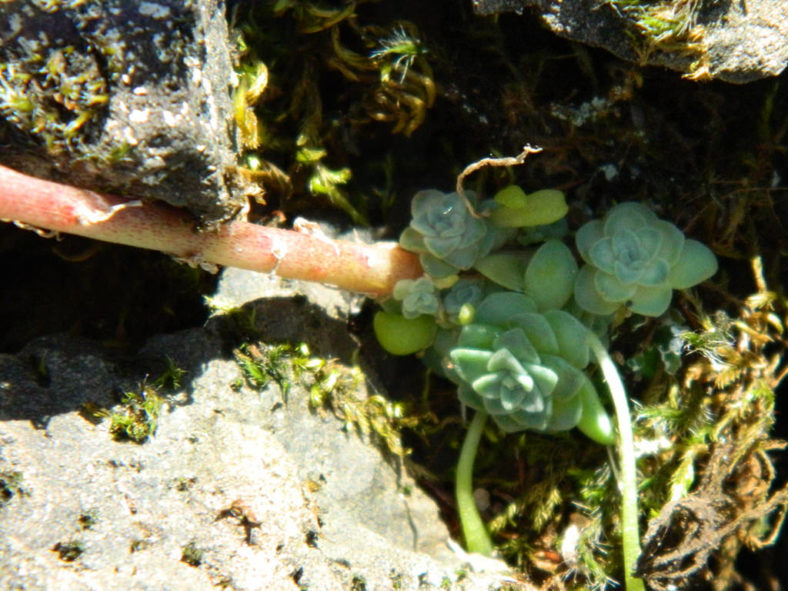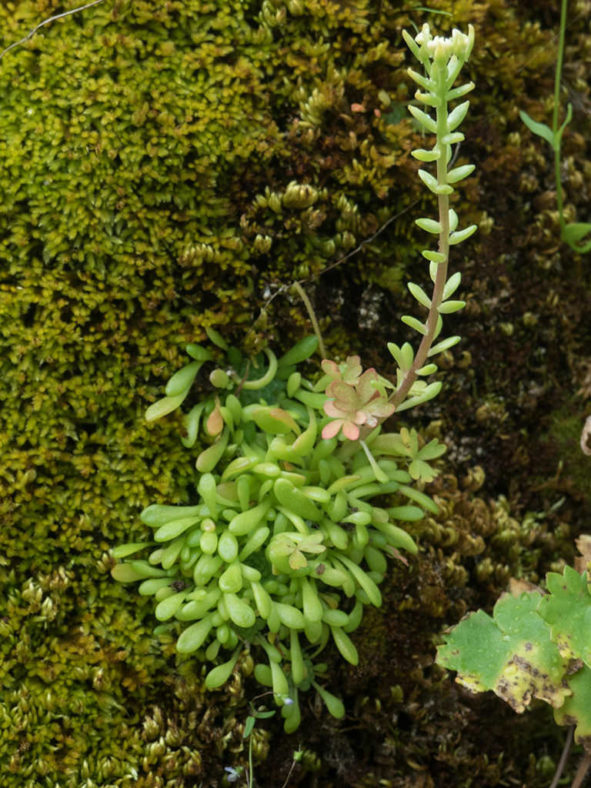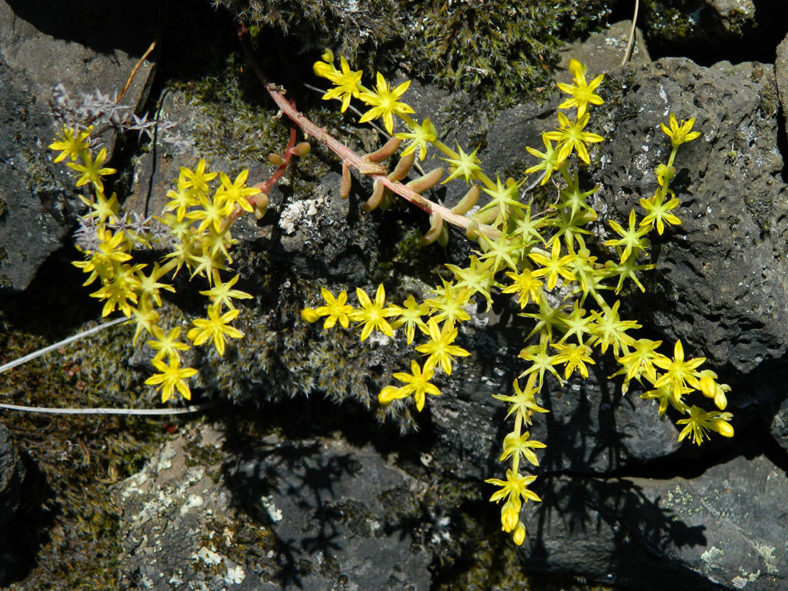Scientific Name
Sedum leibergii Britton
Common Name(s)
Leiberg Stonecrop, Leiberg's Stonecrop
Synonym(s)
Amerosedum leibergii, Sedum borschii, Sedum divaricatum, Sedum leibergii var. borschii, Sedum leibergii var. typicum
Scientific Classification
Family: Crassulaceae
Subfamily: Sempervivoideae
Tribe: Sedeae
Genus: Sedum
Etymology
The specific epithet "leibergii (lee-BERG-ee-eye)" honors John Bernhard Leiberg (1853-1913), a Swedish-American botanical explorer, forester, and bryologist.
Origin
Sedum leibergii is native to the United States. It grows on cliffs and rocky slopes from Yakima County in Washington south to north-central Oregon and east to southeastern Washington and western Idaho, including the Snake River Canyon.
Description
Sedum leibergii is a biennial succulent with a slender rootstock and spirally arranged leaves that form small, flat, open rosettes. The leaves are soft, green or greenish-white, oblanceolate, obovate, or narrowly spatulate, and can measure about 0.6 inches (1.5 cm) long and 0.12 inches (0.3 cm) wide.
The flowers are bright yellow, star-shaped, usually 5- or 6-merous, sometimes 7-merous, and produced in summer on erect, flat-topped inflorescences with 3 to 6 bracts. The inflorescences can grow up to 7.2 inches (18 cm) tall.
This biennial species can be perpetuated in cultivation since the rootstock forms underground buds that emerge and form rosettes the following season.

How to Grow and Care for Sedum leibergii
Light: This succulent grows best in locations where it will enjoy the full sun for at least six hours daily. It will tolerate partial shade but will not thrive in deep shade. Keep your indoor plant in a sunny window or under artificial lights.
Soil: S. leibergii does not like to sit in waterlogged soil, so drainage is essential to prevent root rot. Choose a well-draining soil mix.
Hardiness: This plant is tolerant of heat and freezing temperatures. S. leibergii can withstand temperatures as low as -20 to 30 °F (-28.9 to -1.1 °C), USDA hardiness zones 5a to 9b.
Watering: From spring through fall, water thoroughly and wait for the soil to dry out before watering again. In winter, water your plant just enough to keep it from shriveling. Avoid wetting the leaves, stems, and flowers when watering.
Fertilizing: Feed with a balanced organic fertilizer in spring. Feeding is unnecessary as long the plant is divided annually and provided with fresh soil.
Repotting: Repot your plant when it outgrows its current pot by moving it out to a larger container to hold the plant better. Spring is the best time to repot S. leibergii. Make sure the soil is dry before you begin repotting.
Propagation: Once you have one S. leibergii, it is easy to make more by dividing the plant. It is also easy to grow from seed. Spring or summer is the best time to sow the seeds.
Learn more at How to Grow and Care for Sedum.
Toxicity of Sedum leibergii
S. leibergii is not listed as toxic for people but can be mildly toxic to pets and children.
Links
- Back to genus Sedum
- Succupedia: Browse succulents by Scientific Name, Common Name, Genus, Family, USDA Hardiness Zone, Origin, or cacti by Genus
Photo Gallery
Click on a photo to see a larger version.


